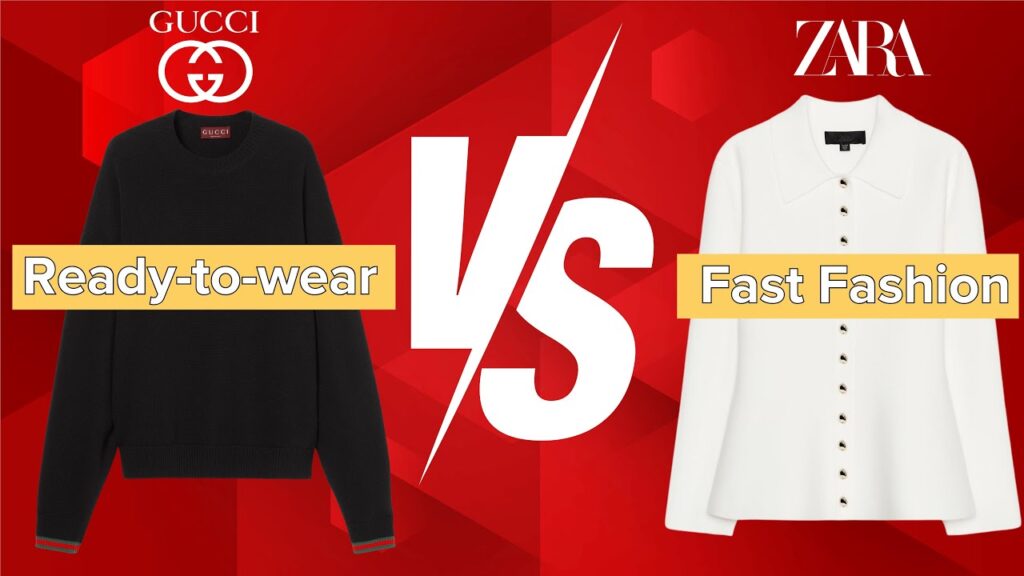Is Prêt-à-Porter / ready to wear Losing Its identity and getting to the point where ready to wear for luxury brands is just like fast fashion.
Follow me on Twitch: https://www.twitch.tv/fashionroadman
My E-Book: https://www.thefashionarchivemag.com/shop
Patreon: https://www.patreon.com/fashionroadman
Spotify: https://open.spotify.com/show/30khAeSML8vrmhrbCL86Ca
Join My Fashion Discord: https://discord.gg/vW6vMz2eHq
Website: https://www.thefashionarchivemag.com/
Social Media: https://linktr.ee/fashionroadman
Join this channel to get access to perks:
https://www.youtube.com/channel/UCVmPyrwjL0wepDhmvgzlOcA/join
Donate To The Channel: https://monzo.me/odunayomichaelojo
MORE INFO:
The world of luxury fashion has long been associated with exclusivity, timeless craftsmanship, and high-quality materials. However, as consumer habits evolve and the pressures of modern retail intensify, luxury fashion houses are increasingly adopting practices eerily reminiscent of fast fashion. Beneath the veneer of opulence, these brands often engage in rapid production cycles, trend-driven designs, and questionable sustainability practices—raising the question: Is luxury fashion just fast fashion in disguise?
Fast fashion is synonymous with quick turnover and mass production, flooding the market with affordable yet low-quality garments to meet ever-changing trends. Luxury fashion, in contrast, traditionally emphasizes artisanal craftsmanship and durability. Yet, in recent years, even the most prestigious brands have begun churning out multiple collections annually, including pre-seasons and capsule collections, to keep up with consumer demand. This relentless pace mirrors the speed at which fast fashion giants like Zara or H&M release new lines, diluting the exclusivity that once defined luxury.
Another telling sign of fast fashion’s influence on luxury is the increasing reliance on trend-driven designs. Luxury brands now often draw inspiration from streetwear, pop culture, and viral moments, creating pieces intended to generate immediate buzz. Think of collaborations like Louis Vuitton x Supreme or the Balenciaga x Crocs partnership. While these collaborations make headlines and appeal to younger audiences, they arguably compromise the timelessness luxury brands claim to uphold. This trend-chasing approach aligns with fast fashion’s strategy of capitalizing on fleeting consumer interests.
The production methods of some luxury fashion houses have also come under scrutiny. While their marketing often highlights sustainability and craftsmanship, many brands outsource production to the same factories used by fast fashion companies, raising ethical concerns. The opacity surrounding supply chains in luxury fashion often mirrors the lack of transparency in fast fashion, making it difficult for consumers to discern how their clothing is made. This blurring of lines undermines the luxury sector’s claim to superior ethics and quality.
Luxury fashion’s adoption of limited-edition drops and influencer-driven marketing further blurs the lines. The “hype” strategy, popularized by streetwear brands like Supreme, creates artificial scarcity to drive demand. While this approach fosters exclusivity, it also mirrors fast fashion’s reliance on urgency and consumer FOMO (fear of missing out). The emphasis on buying now before it’s gone encourages overconsumption, contradicting the narrative of sustainability that many luxury brands promote.
The environmental impact of luxury fashion also warrants examination. Despite their premium price tags, many luxury items are not designed for longevity or repair. Brands often prioritize aesthetic appeal over durability, leading to items that are more likely to be discarded than cherished. Additionally, the carbon footprint of producing multiple collections annually—from sourcing exotic materials to global shipping—is comparable to that of fast fashion, despite claims of sustainability.
As the lines between luxury and fast fashion continue to blur, consumers are left to question the true value of luxury goods. Is the hefty price tag justified by quality and ethics, or is it merely a marketing ploy to sustain an illusion of exclusivity? By examining the practices of luxury fashion brands, it becomes evident that their operations are increasingly indistinguishable from the fast fashion model they often criticize. For consumers, the challenge lies in holding brands accountable and making informed choices to support genuine sustainability and craftsmanship.
#fashion #luxuryfashion #style #fashionreview #fashionnews


